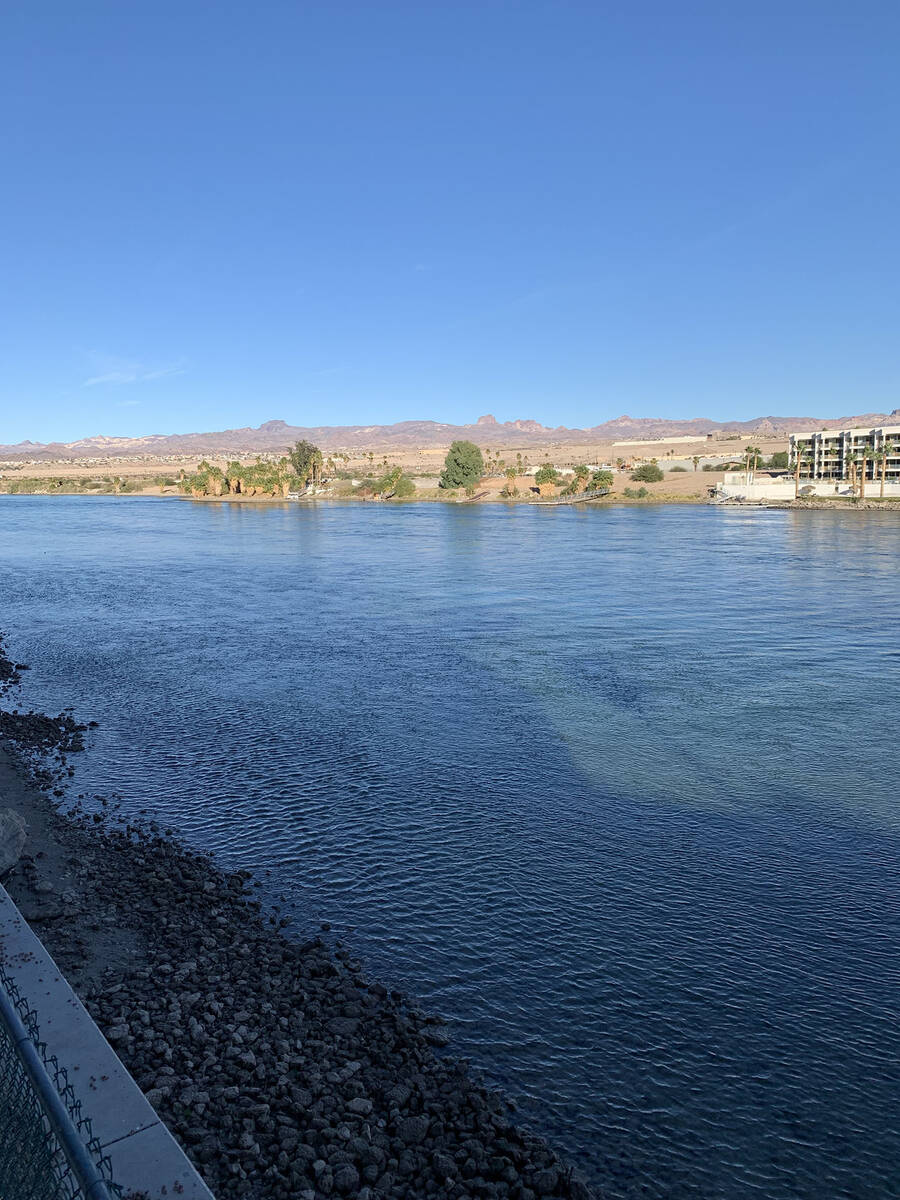Nevada, Arizona bear brunt of California plan to save water
California has laid out its own proposal for how the seven states that rely on the Colorado River should conserve water, releasing its plan one day after the other six states sent their own joint proposal to the federal government.
California’s proposal, which was outlined in a letter sent late Jan. 31 to the Bureau of Reclamation, calls for up to 2 million acre-feet in additional cuts based on the water level at Lake Mead, with Arizona and Nevada likely shouldering the load for the majority of those reductions.
Those proposed cuts are designed to keep Lake Mead and Lake Powell, the Colorado’s two main storage reservoirs that currently hover around one-fourth of their capacities, from further crashing to levels that would threaten power generation and water delivery capabilities along the river that supplies water to 40 million Americans, including 90 percent of Southern Nevada’s water supply.
California’s proposal came one day after Nevada, Arizona, New Mexico, Utah, Colorado and Wyoming submitted their own proposal jointly to the bureau, a plan that calls on California to take significant cuts to its annual allotment from the river.
The two plans proposed a similar sum of reductions in response to a call from the Bureau of Reclamation to reduce water use along the drought-stricken river by 2 to 4 million acre-feet in the coming years, cuts that would amount to about a 15 to 25 percent reduction in use across the river.
Priority water rights
But the plans’ respective paths lay bare competing beliefs over how the river should be managed — sticking to a strict priority system versus spreading the reductions more broadly and evenly.
“This alternative provides a realistic and implementable framework to address reduced inflows and declining reservoir elevations by building on voluntary agreements and past collaborative efforts in order to minimize the risk of legal challenge or implementation delay,” wrote JB Hamby, chairman of the Colorado River Board of California and the state’s Colorado River Commissioner, in the letter.
The plan proposed by the other six states heavily revolves around accounting for more than 1.5 million acre-feet in water lost to evaporation and transportation in Lake Mead and downstream of Hoover Dam. That accounting would effectively translate to substantial cuts to the lower basin states of Arizona, Nevada and California, with the majority of those reductions falling to California.
California’s plan does not take those losses into account, and instead calls for reducing water use in the lower basin by 1 million acre-feet per year, with 400,000 of that coming from California — cuts that the state last year announced that it would voluntarily take as part of an agreement with the federal government to provide funding to restoration efforts at the Salton Sea. The remaining cuts would be split among Arizona and Nevada, which would see their allocations reduced by 560,000 and 40,000 acre-feet, respectively.
More cuts to come
Both proposals also call for additional cuts to water allocation as the water level at Lake Mead falls closer to 1,000 feet in elevation. The surface of Lake Mead currently sits around 1,047 feet, and is expected to fall more than 30 feet before the end of 2024 according to the most recent projections from the Bureau of Reclamation.
The multistate proposal lays out how those deeper cuts at lower elevations would be divvied up, while California’s says that those reductions “should be applied using existing authorities,” which would likely mean further heavy cuts to Nevada and Arizona.
California takes the largest share of annual Colorado River allocations at 4.4 million acre-feet per year, and due to prior agreements between the states and California’s senior water rights along the river, it is last in line to take cuts. Arizona and Nevada meanwhile have faced reductions in each of the past two years due to Lake Mead’s continued plunge.
Federal officials had previously told states that an agreement on proposed cuts would need to be submitted by the end of January. But now with dueling proposals on the table, the focus shifts to how the federal government will move forward and how much of each plan it may or may not incorporate as officials examine various modeling scenarios for the river that has shrunk substantially over the past two decades amid chronic drought.
The bureau expects to review the proposals and have a draft of its findings published by the end of March, with a final decision on a plan by August, when the agency usually announces allocation plans for the Colorado River for the next year.
Litigation possible
Elizabeth Koebele, associate professor at University of Nevada, Reno who studies water policy and governance, said that it will be difficult for the other states’ proposal to be analyzed without California’s support because that would likely lead to a lawsuit from California, something the agency appears to be trying to avoid.
Part of the problem, Koebele said, is that the century-old priority system was never meant to deal with the current hydrology along the river driven by a hotter and drier climate.
“If it does go to litigation, does the federal government have the power to say that this has to be adjusted because it simply does not fit with this reality? I think that’s really what’s at the heart of this debate,” Koebele said.
The federal government’s attempts to avoid litigation are part of the reason the Colorado River system has fallen into dire straits, said John Fleck, a water researcher at the Utton Center at University of New Mexico School of Law.
The fundamental disagreement over how to manage the river basin has dragged on for more than two decades without any real effort to address the underlying concerns, Fleck said. The federal government could incorporate both proposals in some form into its analysis, but after that it will have to make the difficult decision that likely will not satisfy all sides, he added.
“Sooner or later we’re going to have to do something. Our attempts to avoid litigation for 20 years have drained the reservoirs,” Fleck said. “It would be really easy to litigate our way into dead pool, and then they don’t have the water anyway.”
Dead pool is a lake level that drops so low water can no longer flow over the Glen Canyon or Hoover dams, preventing them from generating electricity.
John Entsminger, general manager for the Southern Nevada Water Authority, said he still believes that the Bureau of Reclamation’s process provides the time necessary for the seven states to work toward a true consensus plan
While the states were at an impasse at a recent meeting in Denver, he doesn’t feel as if they were “light years apart.” The sides more or less agreed on the overall volumes that should be reduced, which is evidenced by the similar overall numbers proposed by the two plans. Entsminger said he felt that there have been productive conversations with California in recent weeks, but exactly where those cuts would come down in the basin became a sticking point.
“There is still time,” Entsminger said. “And I believe there’s a realistic path or I wouldn’t keep getting on zoom calls and airplanes.”
Contact Colton Lochhead at clochhead@reviewjournal.com. Follow @ColtonLochhead on Twitter.
















